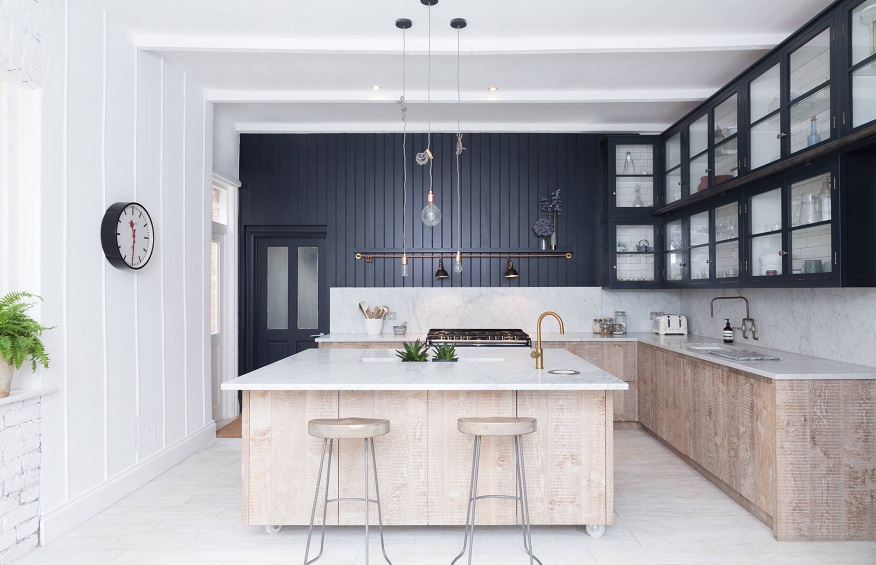Choosing the right faucet for your kitchen or bathroom is an important decision that can greatly impact the overall functionality and style of the space. With so many options available on the market, it’s essential to consider several factors before making your final decision. In this blog post, we will discuss some key considerations to keep in mind when selecting a faucet, including style, functionality, size, installation, durability, material, water efficiency, maintenance, and budget. Let’s dive in!
Consider the Style
When it comes to faucets, style plays a significant role in enhancing the aesthetic appeal of your kitchen or bathroom. Whether you prefer a traditional, contemporary, or modern style, choosing a faucet that complements the overall design theme of the space is crucial. Here are a few popular faucet styles to consider:
- Single-handle faucets: These faucets feature a single lever that controls both the temperature and flow of water. They offer a sleek and minimalist look.
- Double-handle faucets: These faucets have separate knobs or levers for hot and cold water. They provide a more traditional and classic appeal.
- Wall-mounted faucets: These faucets are mounted on the wall above the sink or countertop. They create a clean and modern look while also saving counter space.
- Pull-out or pull-down faucets: These faucets have a spray wand that can be pulled out or down for extended reach. They are convenient for washing dishes or filling large pots.
When choosing a faucet style, consider the overall design of your kitchen or bathroom, as well as your personal preference. Selecting a faucet that blends seamlessly with the existing fixtures and decor will create a cohesive and visually appealing space.
Assess the Functionality
Aside from the style, it’s essential to assess the functionality of a faucet before making a purchase. Consider your specific needs and requirements to ensure the faucet meets your expectations. Here are a few important factors to consider:
- Water flow rate: Determine the water flow rate you prefer, whether you prefer a high flow rate or a more water-conserving one.
- Spray options: Some faucets offer multiple spray options, such as aerated stream or powerful spray, providing flexibility in performing various tasks.
- Temperature control: Check if the faucet provides easy and precise temperature control, allowing you to achieve your preferred water temperature quickly.
- Noise reduction: Look for faucets that come with technology to reduce noise caused by water flow, making your kitchen or bathroom more peaceful.
Evaluating the functionality of a faucet will help ensure it caters to your specific needs, making daily tasks more convenient and enjoyable.
Evaluate the Size and Installation
Consider the available space in your kitchen or bathroom
Before choosing a faucet, consider the available space in your kitchen or bathroom. Measure the area to determine the optimal size and placement of the faucet. It’s crucial to choose a faucet that fits well within the space and allows for comfortable use.
Assess the compatibility with existing plumbing systems
When replacing a faucet, it’s important to assess the compatibility with your existing plumbing systems. Check the number and size of installation holes in your sink or countertop to ensure the new faucet can be installed without any modifications.
Evaluate the ease of installation
Consider the level of difficulty involved in installing the faucet. Some faucets require complex installation processes, while others are designed for easy installation, even for a DIY enthusiast. If you’re not confident in your plumbing skills, it’s advisable to hire a professional for the installation.
Consider the size of the faucet handle and spout
When evaluating the size of the faucet, take into account the handle and spout proportions. It’s important to choose a faucet with a handle and spout size that is comfortable to use and complements the overall design of the space.
Evaluate the number of installation holes required for the faucet
Check the number of installation holes required for the faucet you’re considering. Some faucets require a single hole, while others may need multiple holes for additional features such as a soap dispenser or sprayer. Ensure the number of installation holes matches your sink or countertop configuration.
Check for Durability and Quality
Durability and quality are vital factors to consider when choosing a faucet. You want a faucet that will withstand everyday use and last for years to come. Look for faucets made from high-quality materials such as solid brass or stainless steel. These materials are durable, resistant to corrosion, and easy to maintain.
Compare Different Materials
Metal vs. Ceramic: Which Material is Best?
When it comes to faucet materials, there are various options available. Two popular choices are metal and ceramic. Metal faucets, such as those made of brass or stainless steel, are known for their durability and longevity. They offer a classic and luxurious appeal. On the other hand, ceramic faucets are highly resistant to corrosion and provide a sleek and modern look. Consider your style preferences and durability requirements when choosing between metal and ceramic faucets.
The Pros and Cons of Plastic Faucets
Plastic faucets are a budget-friendly option and are generally easy to install. However, they are not as durable as metal or ceramic faucets and may be prone to cracking or leaking over time. If you’re on a tight budget or need a temporary solution, plastic faucets can be a viable choice. However, for long-term durability, it’s recommended to opt for metal or ceramic options.
Considering the Benefits of Glass Faucets
Glass faucets offer a unique and elegant look that can enhance the overall aesthetic of your kitchen or bathroom. They are typically made from tempered glass, making them highly durable and resistant to scratches. However, glass faucets may require more maintenance in terms of cleaning to keep them looking their best.
Stainless Steel or Brass: Choosing the Right Material
Stainless steel and brass are both excellent choices for faucet materials. Stainless steel faucets are known for their durability, resistance to corrosion, and ease of maintenance. They offer a modern and sleek appearance. Brass faucets, on the other hand, provide a more traditional and timeless appeal. They are highly durable and have a warm, luxurious finish. Consider the style and maintenance preferences when deciding between stainless steel and brass faucets.
Wooden Faucets: A Unique and Sustainable Option
For those looking for a unique and sustainable option, wooden faucets can be a great choice. Wooden faucets are eco-friendly, as they are made from renewable materials. They offer a warm and natural look to your kitchen or bathroom. However, it’s important to note that wooden faucets require regular maintenance to prevent water damage and warping.
Think About Water Efficiency
Water efficiency is an essential consideration when choosing a faucet. Look for faucets that are labeled as WaterSense certified. These faucets are designed to reduce water consumption without compromising performance. WaterSense certified faucets can help you save money on your water bills and conserve this valuable resource.
Consider the Maintenance and Cleaning
It’s important to consider the maintenance requirements and ease of cleaning when selecting a faucet. Some finishes and materials may require more frequent cleaning or specific cleaning products. If you prefer minimal maintenance, opt for finishes that are resistant to fingerprints and water spots. Additionally, choose a faucet design that allows easy access to clean hard-to-reach areas to prevent mineral buildup over time.
Determine the Budget
Establishing a budget is crucial before starting your faucet search. Faucet prices can vary widely depending on the style, material, and brand. Determine your budget range and look for faucets that meet both your functional and aesthetic requirements within that range.
Consult with a Professional
If you’re unsure about the technical aspects or need assistance in choosing the right faucet, consider consulting with a professional. A plumbing expert can provide valuable insights and recommendations based on your specific requirements and budget.
Publisher Details:
Plumbing Squad
2412 Gundry Ave, Signal Hill, CA 90755, United States
(866) 324-9553
plumbingsquad.com
info@plumbingsquad.com
Choosing a kitchen or bathroom faucet involves considering style, functionality, size, installation, durability, material, water efficiency, maintenance, and budget. Assess your space, prioritize water efficiency, check durability, and establish a budget. Consult with a professional plumber in Torrance, CA for expert advice.
Read Plumbing Squad’s new insightful blog on How to Choose the Right Plumbing Contractor




